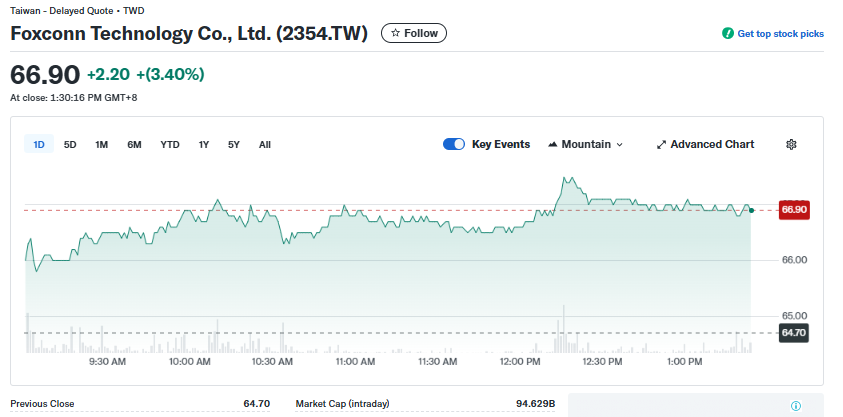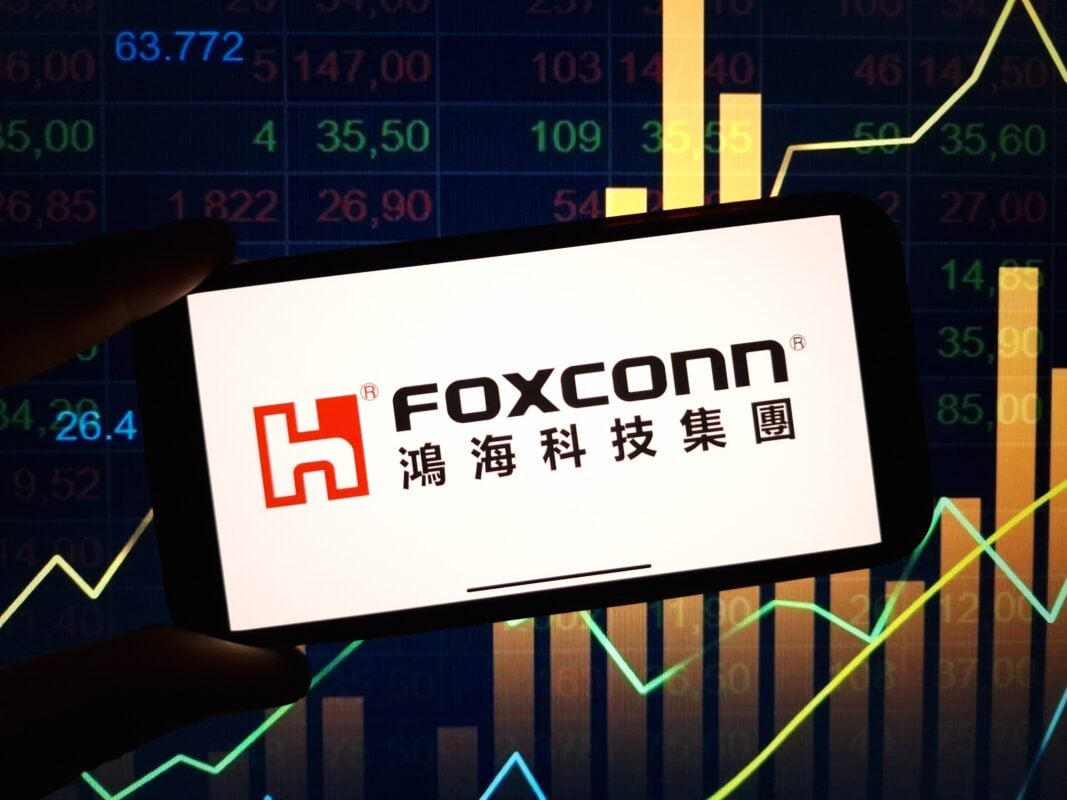TLDRs;
- Foxconn shares rose 3.4% after saying China’s rare earth export curbs pose limited short-term risk.
- China added five new elements to its export control list, deepening restrictions on high-tech materials.
- Foxconn’s record Q3 revenue is driven by strong AI server demand, offsetting geopolitical headwinds.
- Global diversification efforts continue, but China’s dominance in rare earth production remains entrenched.
Foxconn Technology Co., Ltd. (2354.TW) rose 3.4% on Thursday to close at TWD 66.90 after the electronics giant said China’s newly expanded rare earth export restrictions have had only a limited short-term impact on its operations.
Chairman Young Liu, speaking at a press briefing in Taipei, emphasized that while the curbs could create ripple effects across industries if they escalate, Foxconn’s current exposure remains manageable. “We are closely monitoring the developments, but for now, the impact on our supply chain is minimal,” Liu stated.
China, which produces about 90% of the world’s rare earth magnets, recently added five new elements like holmium, erbium, thulium, europium, and ytterbium, to its export control list. These materials, vital in advanced semiconductor manufacturing and high-temperature magnets, now require export licenses under stricter rules introduced last week.

China Tightens Export Controls
The policy shift follows Beijing’s April measures that first targeted semiconductor-related exports containing heavy rare earth elements. Under the new rules, any material with at least 0.1% heavy rare earth content requires special licensing.
The expanded curbs reflect China’s tightening grip over strategic resources that underpin industries ranging from defense and renewable energy to consumer electronics. April exports of rare-earth permanent magnets fell 45% year-on-year after initial licensing began, but approvals have since resumed, easing immediate supply bottlenecks.
Foxconn, known globally as Apple’s largest iPhone assembler and Nvidia’s top server supplier, said the direct impact on its product lines remains limited. Most rare earths used in its server and component assembly, like cooling fans and drives, represent only a small share of system value, with alternative suppliers available outside China.
AI Boom Offsets Supply Risks
Even as regulatory risks mount, Foxconn’s financial momentum continues. Earlier this month, the company posted record third-quarter revenue, driven by surging global demand for AI infrastructure and server manufacturing.
Foxconn reported NT$606.5 billion (US$19.9 billion) in consolidated sales for August 2025, marking a 10.6% year-on-year increase. AI server shipments, in particular, are expected to jump 170% year-over-year in Q3 following a 60% rise in Q2.
Analysts attribute Foxconn’s strength to its dominant position in the AI supply chain. As hyperscale data centers invest billions in new compute capacity, demand for high-performance servers and advanced cooling systems, core Foxconn competencies, continues to climb sharply.
Global Supply Diversification Underway
While Foxconn maintains confidence in short-term stability, industry observers note that broader supply risks remain. China’s dominance in rare-earth production still leaves the global electronics sector vulnerable.
New projects in Europe and North America are underway to reduce dependency. Neo Performance Materials, for instance, is constructing a neodymium-iron-boron (NdFeB) magnet plant in Estonia with a planned 2,000-ton annual capacity by 2025. However, analysts caution that such facilities will take years to match China’s scale and cost efficiency.
Most of the latest Chinese export restrictions will take effect in December 2025, giving manufacturers like Foxconn time to adjust their sourcing strategies and inventory levels. Until then, global markets will continue to watch how geopolitical pressures reshape the delicate balance between industrial policy and high-tech manufacturing.





